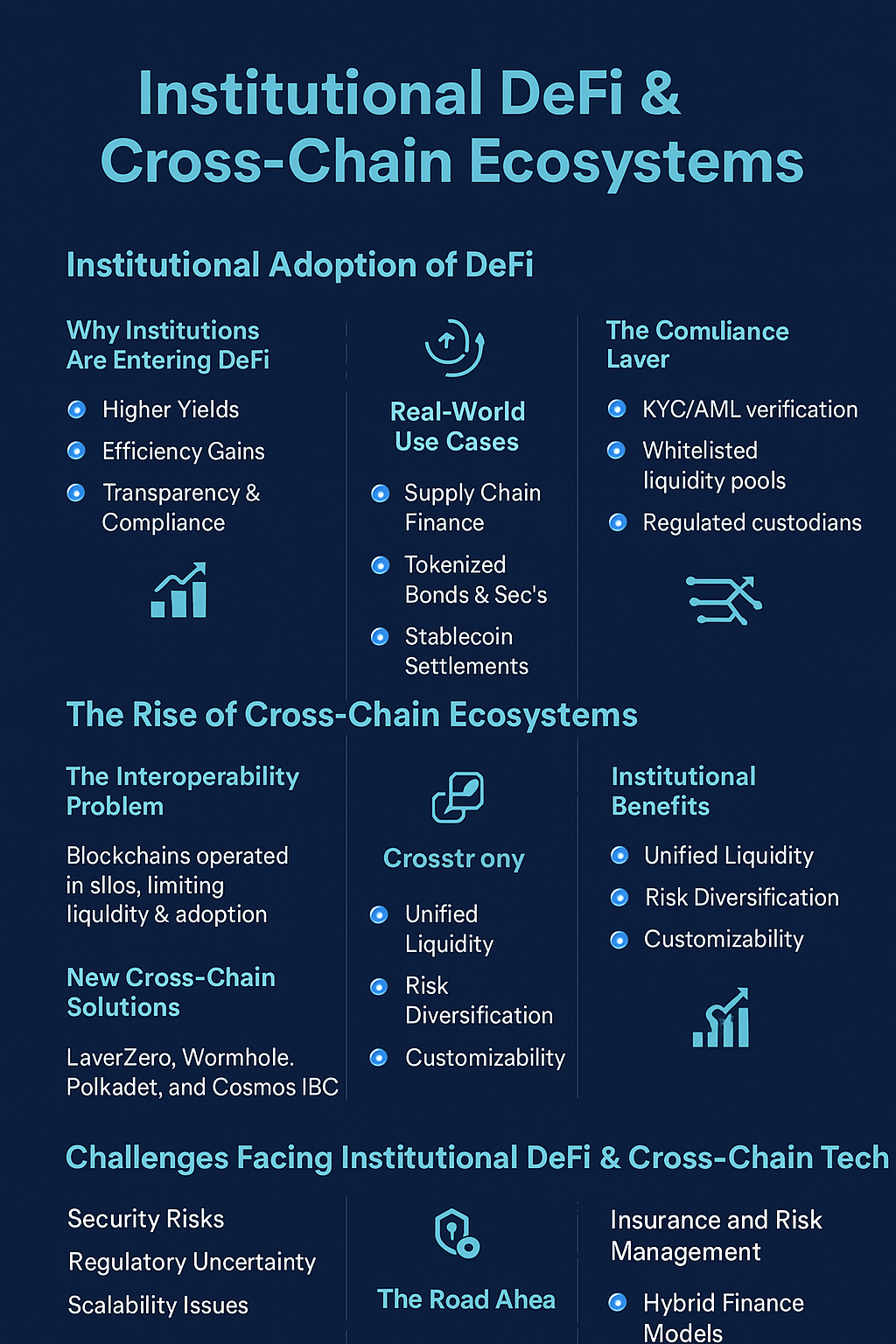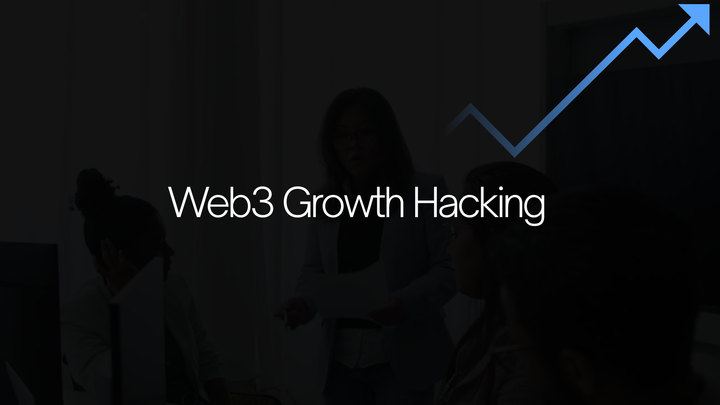Institutional DeFi & Cross-Chain Ecosystems: The Next Phase of Web3

Introduction
Decentralized finance (DeFi) has grown from a niche experiment in 2020 into a multi-billion-dollar ecosystem. In 2025, DeFi is poised to enter its institutional phase. Enterprises, banks, and financial institutions are beginning to adopt blockchain-based finance, while new cross-chain technologies are making it possible to move assets and data seamlessly across multiple blockchains.
This convergence is setting the stage for DeFi 2.0: an era where traditional finance (TradFi) and decentralized finance meet on a global, interoperable network.
Institutional Adoption of DeFi
1. Why Institutions Are Entering DeFi
- Higher Yields: Tokenized assets, on-chain lending, and liquidity pools often provide better returns than traditional banking products.
- Efficiency Gains: Smart contracts reduce intermediaries, lowering settlement costs and processing times.
- Transparency & Compliance: On-chain activity creates immutable records that can improve auditing and reporting.
2. Real-World Use Cases
- Supply Chain Finance: Enterprises are using blockchain-based lending to finance suppliers in real time, reducing cash flow bottlenecks.
- Tokenized Bonds & Securities: Banks are experimenting with issuing tokenized debt and equity instruments that can be traded on-chain.
- Stablecoin Settlements: Multinational corporations are adopting stablecoins for faster, cheaper cross-border payments.
3. The Compliance Layer
For institutions, regulatory compliance is non-negotiable. This has led to the rise of permissioned DeFi protocols that include:
- KYC/AML verification for institutional users.
- Whitelisted liquidity pools are restricted to verified participants.
- Regulated custodians for digital asset storage.
The Rise of Cross-Chain Ecosystems
1. The Interoperability Problem
Until recently, blockchains operated in silos; Ethereum, Solana, Cosmos, and others lacked native ways of communication, which limited liquidity and user adoption.
2. New Cross-Chain Solutions
- LayerZero, Wormhole, Polkadot, and Cosmos IBC are enabling cross-chain communication and asset transfers.
- Cross-Chain DEXs allow traders to swap assets across multiple networks, eliminating the need for centralized exchanges.
- Interoperable Smart Contracts can execute actions across chains, opening doors for multi-chain dApps.
3. Institutional Benefits
- Unified Liquidity: Institutions can tap into liquidity across ecosystems, improving capital efficiency.
- Risk Diversification: Assets spread across chains reduce systemic risks tied to a single network.
- Customizability: Enterprises can choose blockchains that fit their regulatory or technical needs, while still interacting with others.
Challenges Facing Institutional DeFi & Cross-Chain Tech
- Security Risks: Cross-chain bridges remain one of the biggest targets for hacks (over $2B stolen between 2022–2024).
- Regulatory Uncertainty: Jurisdictions differ on how they treat tokenized assets and DeFi protocols.
- Scalability Issues: Even with L2s, transaction throughput may bottleneck institutional-scale adoption.
- Interoperability Standards: Without universal frameworks, fragmentation and incompatibility could slow adoption.
The Road Ahead
- Hybrid Finance Models
- Expect to see “CeDeFi” platforms that merge decentralized finance with compliance and oversight tailored for institutions.
- Institutional Liquidity Pools
- Banks may run regulated pools where they lend or borrow using tokenized fiat and securities.
- Cross-Chain Financial Infrastructure
- Multi-chain settlement layers will allow enterprises to move money and assets globally with near-instant finality.
- Insurance and Risk Management
- DeFi-native insurance markets will expand to protect institutional players against hacks and smart contract exploits.
Conclusion
Institutional DeFi and cross-chain ecosystems represent the next frontier in Web3. By merging enterprise-grade trust and compliance with decentralized efficiency and innovation, they could reshape global finance.
The winners in this space will be those who solve the trust gap: building interoperable, secure, and regulation-friendly platforms that allow institutions to confidently step into DeFi.
In short: DeFi 2.0 will not just be decentralized, it will be institutional, interoperable, and global.



Comments ()